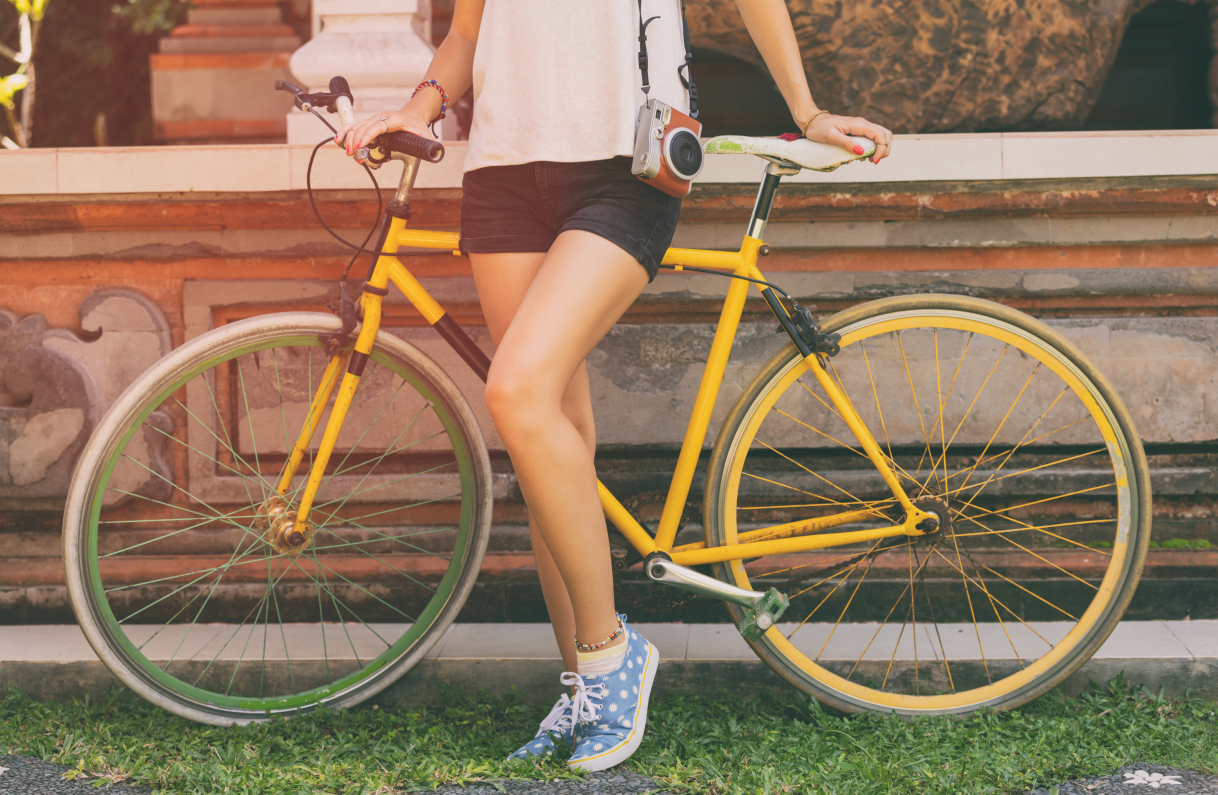Getting your bike ready after winter break
The cold months are drawing to a close, the days are getting longer and the nights shorter. The sun is up for longer and spring is nearly here. It will soon be time to get your bike back out of the garage. But before stepping on the pedals and feeling the wind in your hair, you need to get your old bike back into shape. Our blog provides you with useful tips on how to clean your bike.

The cold months are drawing to a close, the days are getting longer and the nights shorter. The sun is up for longer and spring is nearly here. It will soon be time to get your bike back out of the garage. Whether you are planning an energetic ride or just a Sunday pootle, a bike adds flexibility and exercise to your life. But before stepping on the pedals and feeling the wind in your hair, you need to get your old bike back into shape. To help you do this, here is a short guide with just a few simple steps:
1. Clean
To help you see where any problems might be, it helps to give your bike a thorough clean. Riding a clean bike is also a lot more fun. As with other things this time of year, your bike also needs a spring clean. But be careful! Do not use a pressure washer. This forces water into the bike’s bearings which can cause corrosion. Petrol and other solvents should also be avoided because they could remove important lubricant from inside the chain. Start by washing your bike with water. Then spray the frame and other components with a bike cleaning product. Leave for a few minutes then wipe the dirt away with a soft sponge. Use a soft bristled brush for the delicate components. For example, use an old toothbrush to clean in even the smallest spaces. Let the bike dry, then rub down any remaining wet areas with a dry cloth.
2. Lubricate
To protect your bike from more dirt or corrosion, some components need to be lubricated with oil and grease. First protect your floor by putting down an old sheet where you are going to be working. Turn your bike upside-down so that the handlebars and saddle are on the floor supporting the bike. If you have a bike repair stand, you can of course use this. Now you can reach everything easily and you can turn the pedals without having to lift up the bike. Important: there is no universal grease for all components. Use different lubricants for the different components.
- Chain: The chain determines how easy it is to make headway. A dirty chain makes it more difficult to push the pedals and also reduces the life span of your bike. Get a cloth and general purpose oil. Slowly move the pedals with one hand. With the other hand, wipe the chain with the cloth by letting the moving chain move through your hand. Then spray the clean chain links with the oil and turn the pedals round a few times to distribute the oil well. Any excess oil should be wiped off with a cloth because it attracts dirt.
- Bearings: To lubricate the hub bearings, bottom bracket and headset, you need to use bearing grease. It is viscous and adheres better. Sealed bearings are lubricated for life; therefore these bearings do not need lubricating.
- Seat post: You can also use bearing grease for the seat post. But be careful: carbon seat posts must not be lubricated. An assembly paste can be used for carbon seat posts when required.
- Suspension fork and shock absorber: Only lubricate the fork using specially designated products. One such product is low viscosity fork oil. Do not use general purpose oil. This is too thick for the fork.
3. Check components
Before setting off on your bike, make sure you check the following components in our check-list.
- Screws: The screws in the seat post or quick release should be securely tightened to keep you safe on the saddle. Check all other screw connections. Tighten any loose screws.
- Brakes: They should be easy to operate and modulate. To check the brake pads, look at the grooves in the rubber. If you can’t see any grooves, you need to replace the pads. If the brakes are still not working correctly, check that all the brake cables are still firmly attached to the frame.
- Dérailleur: The chain should not touch the front dérailleur when the pedals move. This can lead to unwanted gear changes. The barrel adjuster can be used to adjust the front dérailleur. It is located at the point where the cable enters the gear shifter. It is recommended to make small adjustments, turning the barrel adjuster just a little each time.
- Lights: If they do not work, check any cables or connections.
- Air: The recommended tyre pressure can be found on the side of the tyre. When riding on tarmac, a higher air pressure provides lower rolling resistance. When riding off-road, a lower air pressure is recommended to increase the surface area and allow the rider more control.

Perfect storage solutions for your hobby
Your cellar is overflowing?
You can store your belongings flexibly at Zebrabox, whether for a week or as long as you like. Each room is individually alarmed and maintains low humidity all year round, with 24-hour video surveillance!